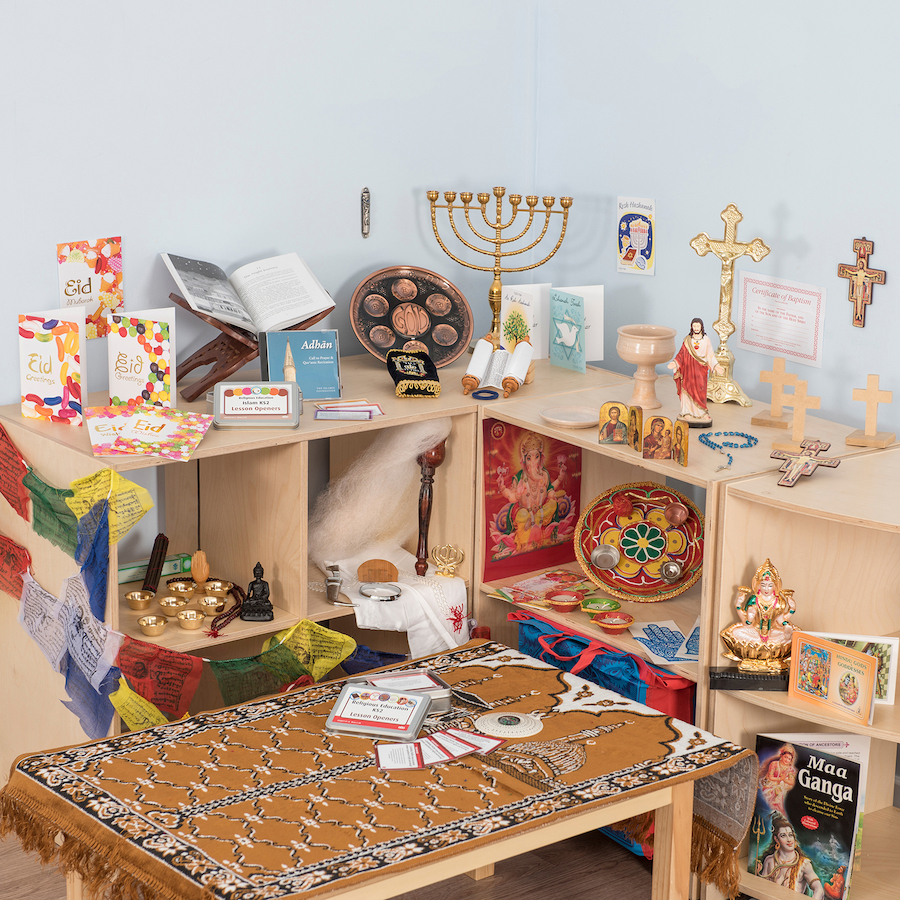Learning about Easter using artefacts
Artefacts help to bring the teaching of religions and beliefs to life.
- Teach children how to explore and respect artefacts by exploring their own special items first.
- Start by getting children to simply describe what they see and then encourage them to ask questions about the artefacts.
- Discuss the answers to their questions or work together to research the answers.
- With events, such as Easter, you can use the artefacts while learning about the religious story or event to help children with their understanding.
Create an Easter artefacts box
Create your own Easter artfeacts collection to help you to teach children about Easter.
Some artefacts you could collect and use are:
- An egg. Symbol of new life, it looks like a stone, but something alive comes from it, like the grave of Christ in the Easter story.
- An empty cross. An image of the cross with nobody on it: a resurrection image, easy to refer to as a ‘Sunday Cross’.
- A crucifix. An image of Jesus on the cross, easy to call a ‘Friday Cross’ for children.
- Thirty pieces of silver. The price Judas was paid to betray Jesus.
- A donkey. Jesus’ last week began with a triumphant procession into Jerusalem on a donkey.
- A world. Christians believe that Jesus’ death was not just a tragedy, but an act of love that saves the world.
- A bandage. The body of Jesus was buried wrapped in bandages.
- An image of Mary, the mother of Jesus. She was a witness to his death and at the empty tomb. What might she have felt on these two days?
- A figure of the risen Christ. Jesus back from the dead, with wounds in his hands and feet.
- A rabbit. A common symbol for spring and for Easter, wrapped up in a myth of the ‘Easter Bunny’.
- A lamb. Christians call Jesus ‘the Lamb of God’: to them, he is the sacrifice that brings humanity and God together.
- A chocolate bar or chocolate egg. Chocolate has a special place at Easter, partly because Lent, the 40 previous days, is a time of abstinence.
 This Easter artefact collection is available from TTS.
This Easter artefact collection is available from TTS.
Read the Easter Story with the children or you could use an online resource, such as BBC broadcasts: ‘Religions of the World’ for 5-7s and ‘My Life My Religion’ for 7-11s.
Take objects from the box one by one and display them on a cloth. Ask the children to think about each item and discuss its relevance to Easter.
Four thinking activities:
- Speak and listen: Discuss each object’s connection to Easter stories and celebrations.
- Play ‘Kim’s Game’. Cover the objects with the cloth and ask pupils if they can remember all 14.
- Put the artefacts in order. Lay out numbers in a line and invite different children to start at the bottom: what is least important at Easter? And then work up to number 1.
- Writing about what matters at Easter. Ask pupils to select the three objects they think say the most about the Easter festival, and write a paragraph to explain why they chose these three.
Shop the range of Religious artefacts and resources online here





